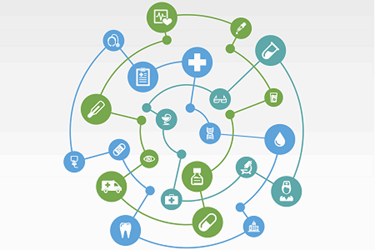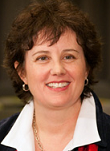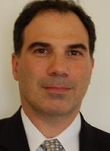Can Real-World Evidence Improve Market Access For Biosimilars In The U.S.?
By Anita Burrell, Anita Burrell Consulting LLC

In this series of articles, we have looked at why the penetration of biosimilars has been relatively slow in the U.S. and whether there are market access issues that have hindered their uptake. Biosimilars were originally estimated by the Congressional Budget Office (CBO) to result in a 10-year decrease in federal spending of about $5.9 billion in 2009, but the actual estimated savings have only been around 8 percent of that amount (approximately $241 million). While physician (and patient) hesitation may account for some of the difference, it is clear that market access has also been an issue. A recent survey by Avalere of the top 25 payers in the U.S. (about 189 million covered lives), using publicly available coverage policies, found that biosimilars are commonly subject to step-through polices, including those that require the patient to “fail” first on a branded product, and only then will the payer cover a biosimilar of that same branded product (i.e., the biosimilar’s reference product).
In this third installment of my discussion with four experts in the field — Gillian Woollett, senior VP, Avalere; Nicolas Arkells, CEO, Manticore Consulting Group; Sheila Frame, VP and head, Sandoz Biopharmaceuticals, North America; and Roman Casciano, general manager, Laser Analytica — we look at the role real-world evidence (RWE) can play in increasing the uptake of biosimilars in the U.S. market and some of the challenges in leveraging the potential of RWE. (Read part 1 and part 2.)
Anita Burrell: In the previous two articles in this series, each of you referenced real-world evidence as a fundamental way that the market access situation could be changed. Could you tell us what you think of as RWE and why this is important?
 Sheila Frame, Sandoz: There is clear evidence that biosimilars increase access to biologics in the EU. According to a report by IMS Health,1 the use of biologic treatments in the EU has increased by as much as 100 percent following the availability of biosimilars. We are currently working to assess the impact of Zarxio on patient access in the U.S. An analysis2 presented at the 2017 American Society of Clinical Oncology annual meeting estimated that a 20,000-patient panel could potentially yield expanded access to Zarxio, on a budget-neutral basis, to 2,699 additional patients if 100 percent are converted from Neupogen to Zarxio, and to 4,063 to 32,939 additional patients, depending on cycles/treatments, if patients are converted from Neulasta to Zarxio.
Sheila Frame, Sandoz: There is clear evidence that biosimilars increase access to biologics in the EU. According to a report by IMS Health,1 the use of biologic treatments in the EU has increased by as much as 100 percent following the availability of biosimilars. We are currently working to assess the impact of Zarxio on patient access in the U.S. An analysis2 presented at the 2017 American Society of Clinical Oncology annual meeting estimated that a 20,000-patient panel could potentially yield expanded access to Zarxio, on a budget-neutral basis, to 2,699 additional patients if 100 percent are converted from Neupogen to Zarxio, and to 4,063 to 32,939 additional patients, depending on cycles/treatments, if patients are converted from Neulasta to Zarxio.
We are already seeing a shift in physician acceptance of biosimilars. Sandoz’s Zarxio has 39.5+ percent of the short-acting GCSF (granulocyte colony stimulating factor) market. In March, Zarxio surpassed the originator product to become the No. 1 filgrastim in the U.S. This is real-world evidence.
 Roman Casciano, Laser Analytica: From my perspective, it is all about minimizing the uncertainties that, right or wrong, do surround biosimilars and what better approach than leveraging real-world data to address the concerns that are out there? Real-world data on plan level health outcomes can be incorporated into low-risk pay for performance contracts where (unlike with a new treatment) manufacturers can enter with a high degree of confidence that the desired results will be achieved.
Roman Casciano, Laser Analytica: From my perspective, it is all about minimizing the uncertainties that, right or wrong, do surround biosimilars and what better approach than leveraging real-world data to address the concerns that are out there? Real-world data on plan level health outcomes can be incorporated into low-risk pay for performance contracts where (unlike with a new treatment) manufacturers can enter with a high degree of confidence that the desired results will be achieved.
Gillian Woollett, Avalere: Just like the originator biologics to which they  refer, biosimilars are going to be developed and manufactured for patients across multiple jurisdictions. Europe happens to be the leader, and evidence is being accrued through their use that is pertinent to subsequent markets.3,4 To date, the safety experience of the highly regulated markets is broadly accepted elsewhere as the post-approval safety surveillance systems are largely comparable. And biosimilars have been shown to match their reference products in practice in normal clinical settings of care. This should be reassuring to all subsequent jurisdictions, such as the U.S., that the regulatory science approaches are proving entirely sound in actual practice.
refer, biosimilars are going to be developed and manufactured for patients across multiple jurisdictions. Europe happens to be the leader, and evidence is being accrued through their use that is pertinent to subsequent markets.3,4 To date, the safety experience of the highly regulated markets is broadly accepted elsewhere as the post-approval safety surveillance systems are largely comparable. And biosimilars have been shown to match their reference products in practice in normal clinical settings of care. This should be reassuring to all subsequent jurisdictions, such as the U.S., that the regulatory science approaches are proving entirely sound in actual practice.
The cumulative experience worldwide with the same biosimilars, just as we accrued it with the originator products used for their reference, is supportive of the regulatory principles that are increasingly consistently being applied across markets. This allows for greater harmonization and greater efficiencies in the development and manufacture of all biologics, indeed all drugs. There are various regulatory forums that are collaborating to enhance these activities, and FDA Commissioner Gottlieb has also encouraged them. It should be self-evident that if an originator biologic can be developed once and marketed in multiple jurisdictions, then a biosimilar to it should be, too (here). The regulatory consequence is enormous and the implementation will continue to take work, but it is a conclusion to aspire to that can make a major difference in access and affordability. I have every confidence that Dr. Gottlieb knows this and will persist to make it happen.
 Nicolas Arkells, Manticore Consulting Group: RWE can also be used to actively assess initial patient perceptions regarding biosimilars. Once a baseline is established, RWE can be used to enable biosimilar companies to actively benchmark their progress, as they monitor the success of their educational outreach efforts. This already proved successful with Samsung’s Benepali, which improved on the sponsor biologic’s delivery system to create higher customer satisfaction that was augmented by RWE surveys.5 This facilitates a significantly more effective means of engagement, as it turns the process into a Lean and Agile project that can rapidly shift resources in the most economic manner possible. This is also very viable, as relatively small and inexpensive opinion surveys can suffice to assess patient sampling.
Nicolas Arkells, Manticore Consulting Group: RWE can also be used to actively assess initial patient perceptions regarding biosimilars. Once a baseline is established, RWE can be used to enable biosimilar companies to actively benchmark their progress, as they monitor the success of their educational outreach efforts. This already proved successful with Samsung’s Benepali, which improved on the sponsor biologic’s delivery system to create higher customer satisfaction that was augmented by RWE surveys.5 This facilitates a significantly more effective means of engagement, as it turns the process into a Lean and Agile project that can rapidly shift resources in the most economic manner possible. This is also very viable, as relatively small and inexpensive opinion surveys can suffice to assess patient sampling.
Burrell: What are some of the drawbacks to using RWE? Are there pitfalls that manufacturers should be aware of when using this sort of data?
Frame: We don’t really see a pitfall with RWE, as Sandoz has more than 20 years of biosimilar experience and 450 million patient days of experience across 86 countries. Real-world experience affirms the FDA’s statement that patients and healthcare professionals can expect the same safety and efficacy profile from an FDA-approved biosimilar as they do from the reference medicine.
Casciano: Of course, there are many known limitations associated with real-world data that we have to be very cautious of, especially if applied in the context of a pay for performance contract. While our data sources are improving every day, many key explanatory variables that might help to us to better understand what has happened to particular patients are still lacking. While this is an often-cited limitation of real-world data, we do have analytic techniques that can address this missing information and at least guide us as to where the uncertainties lie. The biggest problem I see happening is the lack of recognition of these issues and oversimplified analyses that lead to completely erroneous conclusions. For example, if a step-through policy leads to more patients with prior failures on biosimilar treatments, a naïve analysis might conclude that outcomes for patients on biosimilars are worse than those on branded drugs.
Woollett: Post-approval data is great, but it can take a while to accrue, and the different jurisdictions may have different criteria for who gets which medicines and when. This can be partly an issue of cost, which hopefully means access will improve when the more cost-effective biosimilars are available, but it does mean one has to be aware of why some countries may see different outcomes compared to others. Nonetheless, the outcomes for the biosimilars and their reference should always be very similar within a given jurisdiction and setting of care — and that is what we have seen to date. And healthcare providers do seem to be increasingly confident in the use of biosimilars based on this experience, with the rate of uptake of each biosimilar in Europe, for example, being quicker than the last.
Arkells: A unique issue in the United States that will inhibit the use of RWE for cross-sectional or longitudinal studies to show long-term safety and efficacy is the lack of uniformity of its RWE. Biosimilars only recently obtained a unique billing code, without which it is very difficult to assess whether a patient is receiving a biologic versus a biosimilar. The data that is harvested is also dispersed amongst a variety of perspectives, for example, pharmacy databases focus on reimbursement data related to drug use, adherence, and demographics of patient data. EMR data can be much more reductive and looks at different details than most other data sets. SEER data is only linked to Medicare. FDA pharmacovigilance data is far too limited to offer any useful RWE, either. This is precisely why the FDA is still struggling to draft guidelines on how to use RWE.
Burrell: Finally, if you had some tips to give a biosimilar manufacturer looking to increase access to its products, what would they be?
Casciano: Well, this is a quite easy story to tell, but my thinking is that all too often people are tempted to rely on price as the main benefit driver. My advice would be to make sure to keep the evidence, the discussions, and the contracts focused on the public health value created through more appropriate policies and incentives concerning biosimilar access. By public health value, I don’t mean saving dollars; as I stated previously, this is more about getting patients in the real-world setting onto the right therapies faster, keeping them on treatment, and demonstrating the effect this has on overall health outcomes. When that happens, the economics will fall into place.
Woollett: Understanding the nature of the incentives for use of each particular biologic is crucial. In some cases, the U.S. system actually encourages the more expensive product to be used; in others, interchangeability is already essentially assumed. The setting of care matters, as does who makes the decision as to which product gets used for which patient. Then we also have to consider what ancillary services are expected. And, for example, are there any patient assistance programs that will need to be replicated by the biosimilar sponsor? This makes a biosimilar more like a subsequent branded product than a generic, and they cannot compete simply based on price. For interchangeable self-administered products, devices will be important and so will additional education specific to the biosimilar. And, collect data and publish it in the peer reviewed literature so all stakeholders become familiar with the progress.
Finally, we must also consider those biologics currently regulated as drugs that will be “deemed” to be biologics on March 23, 2020. These include the hormones, such as insulin, so lots of payers, providers, and patients need help to understand that the products themselves will not be changing. But on the more positive side, the experiences with these products and their being switched is entirely successful — even for those products for which the FDA has not been asked for a designation of therapeutic equivalence.
Frame: Novartis/Sandoz’s perspective is that we all have to work toward a collective goal — higher value, lower costs, and better access to medicines. Society expects more from the pharma industry, and this is a good opportunity for all of us to work together to make a difference in patients’ lives.
Arkells: Manufacturers should direct their public affairs teams to engage local leadership of the larger, more influential states, as they can enforce mechanisms that limit obstruction of patient access and mandate switching. They can do this by using data from other countries that shows safety and efficacy surrounding biosimilars over long periods of time and large populations. Partnering with larger pharmaceutical companies may also be a critical strategy for success, as recent surveys show if a biosimilar is affiliated with a well-known pharmaceutical, patients are more likely to trust it.6 Larger firms also have the experience and an existing apparatus to communicate the validity of RWE in a manner that is compliant with the myriad of laws relating to marketing pharmaceuticals.
Conclusion
In summary, it appears that RWE has huge potential to improve the market access for biosimilars, both in terms of placement and individualization of therapy. Although challenges still exist in tapping the potential of RWE for manufacturers and other stakeholders in the healthcare market, the opportunity to do so is increasingly important. Biosimilars have to establish value over and above price, and RWE has the power to inform decisions around biosimilar use and provide competitive differentiation to improve market access. Those manufacturers that embrace the challenge of providing RWE could have a market-leading advantage moving forward.
References:
- IMS Health Institute for Healthcare Informatics. “Delivering on the Potential of Biosimilar Medicines: The Role of Functioning Competitive Markets.” March 2016.
- McBride, Ali. “Cost savings of conversion from filgrastim or pegfilgrastim to biosimilar filgrastim-sndz for chemotherapy-induced (febrile) neutropenia (CIN/FN) prophylaxis and expanded access to biosimilar GCSF on a budget neutral basis,” Journal of Clinical Oncology 35, 2017 (suppl; abstr e18334).
- Sreedhar Sagi, et al (2017), “Pharmacovigilance of Biologics in a Multisource Environment”, J Manag Care Spec Pharm. 2017;23(12):1249-5 article
- Hillel P. Cohen et al (2018) “Switching Reference Medicines to Biosimilars: A Systematic Literature Review of Clinical Outcomes,” Drugs article
- Thakur K, Biberger A, Handrich A, Rezk MF. Patient perceptions and preferences of two etanercept autoinjectors for rheumatoid arthritis: findings from a patient survey in Europe. Rheumatol Ther. 2016;3:245–256. doi: 10.1007/s40744-016-0048-9.
- Jacobs I, Singh E, Sewell KL, Al-Sabbagh A, Shane LG. Patient attitudes and understanding about biosimilars: an international cross-sectional survey. Patient Prefer Adherence. 2016;10:937-948.
About The Participants:
Gillian Woollett, senior VP, leads the Avalere FDA Practice. She provides the "prequel" of scientific and regulatory strategic policy expertise that supports medicinal products gaining approval at the FDA in a manner that allows them to be successful in the public and private reimbursement world. She is building a bridge for Avalere clients from the FDA space into the traditionally separate Centers for Medicare & Medicaid Services and healthcare policy/business world. Prior to joining Avalere, Woollett was chief scientist at Engel & Novitt, LLP, VP of science and regulatory affairs at BIO, and AVP of biologics and biotech at PhRMA. She has been an appointee on federal advisory committees to the CDC and the Department of Commerce. She has a D.Phil. in immunology from the University of Oxford and an MA and BA in the natural sciences tripos (biochemistry) from the University of Cambridge.
Nicolas Arkells is the CEO at Manticore Consulting Group, a global health economics and outcomes consulting firm. He has over 15 years of leadership experience ensuring organizational commitment to statistical analysis and implementation. His law and science juris doctorate concentrated on intellectual property, which encouraged his research in biotechnology, market access, policy, regulatory strategy, and patent law. His MBA focused on the application of analytics to provide solutions to real-world problems in the healthcare industry. He is certified in medical devices and pharmaceuticals by the Regulatory Affairs Professionals Society, Lean Six Sigma black belt trained in the healthcare industry, agile certified as a PSM and PSPO, and certified in global human capital through Columbia University. He has been recognized for excellence in legal research, leadership, and alternative dispute resolution.
Sheila Frame is VP and head of Sandoz Biopharmaceuticals, North America, responsible for the development and commercialization of the biosimilar medicines portfolio in the U.S. and Canada. She has more than 20 years of pharmaceutical experience and serves as a member of the Sandoz U.S. Executive Committee. Frame held the role of worldwide general manager for the Immunoscience business at Bristol Myers Squibb (BMS), a role which encompasses responsibility for the commercialization of Orencia for the treatment of RA, with worldwide sales of over $2 billion, as well as the commercial development of BMS’s important pipeline assets in the therapeutic area. Prior to joining the pharmaceutical industry, she worked as a professional lobbyist for the Canadian National Railway. She began her professional career holding senior positions with the Government of Canada as a legislative assistant, where she took 17 bills through the House of Commons and Senate.
Roman Casciano is the general manager of Analytica Laser, a Certara Company. He is responsible for the coordination and management of the strategic and scientific teams of Analytica Laser and supports the company’s clientele as a market access strategist and tactician, as well as an expert in the domains of real-world evidence and economic and disease modeling. Casciano was one of the founding members of the Analytica Group in 1997 and has deep experience in developing and compiling the evidence necessary to support pricing, reimbursement, market access, and coverage decisions for health technologies around the world. He has experience across the product life cycle, including spearheading stakeholder engagement activities with U.S. and European regulators, payers, and technology assessors.
About the Author:
 Anita Burrell, principal of Anita Burrell Consulting LLC, has 23 years of leadership experience in the pharmaceutical industry. She is a founding member of the Aurora Project, which seeks to explore and promote patient-centricity in the industry, and is an adjunct professor at the Ernest Mario School of Pharmacy at Rutgers University. As a consultant, she has helped companies to: understand market dynamics and payer behavior, design Big Data platforms, develop predictive models to inform health technology assessment submissions, and understand the implications of digital health and possibilities to use behavioral economics. She holds a BA (Hons) in economics from the University of Stirling, an MA in economics from Dalhousie University, and an MBA from Kingston University.
Anita Burrell, principal of Anita Burrell Consulting LLC, has 23 years of leadership experience in the pharmaceutical industry. She is a founding member of the Aurora Project, which seeks to explore and promote patient-centricity in the industry, and is an adjunct professor at the Ernest Mario School of Pharmacy at Rutgers University. As a consultant, she has helped companies to: understand market dynamics and payer behavior, design Big Data platforms, develop predictive models to inform health technology assessment submissions, and understand the implications of digital health and possibilities to use behavioral economics. She holds a BA (Hons) in economics from the University of Stirling, an MA in economics from Dalhousie University, and an MBA from Kingston University.
